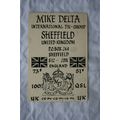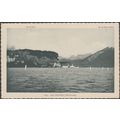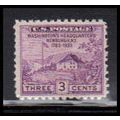Wickhambreaux, Kent - Church of St. Andrew - art postcard c.1970s
- Condition : Used
- Dispatch : 2 Days
- Brand : None
- ID# : 180287238
- Quantity : 1 item
- Views : 207
- Location : United Kingdom

- Seller : justthebook (+1699)
- Barcode : None
- Start : Tue 30 Apr 2019 15:04:27 (EDT)
- Close : Run Until Sold
- Remain : Run Until Sold
Checks/Cheques
 for 1 item(s) edit
for 1 item(s) edit
Shipping Calculator
More Listings from This Seller view all
Seller's Description
- Postcard
- Picture / Image: The Church of St. Andrew, Wickhambreaux [Kent]
- Publisher: Noel Tatt Ltd., Lyminge
- Postally used: no
- Stamp: n/a
- Postmark(s): n/a
- Sent to: n/a
- Notes / condition:
Please ask if you need any other information and I will do the best I can to answer.
------------------------------------------------
Postage and packing charge should be showing for your location (contact if not sure).
UK - PayPal, Cheque (from UK bank) or postal order
I will give a full refund if you are not fully satisfied with the postcard.
----------------------------------------------
Wickhambreaux (/ˈwɪkəmbruː/ WIK-əm-brew) is a small rural village, just off the A257 Sandwich Road, five miles from Canterbury in the county of Kent, England.
Wickhambreaux has a recorded history with connections to the Church and Crown dating back to Roman times.[2] It is first mentioned in 948 when King Eadred granted land to a religious woman, however, Wickhambreaux settlement predates this to at least Roman times as it is on the northwest side of the Roman Road.[2] Wickhambreaux village still retains its medieval pattern with the Church, manor house, rectory, inn and mill encircling the green.[2]
Wickhambreaux manor was once part of the extensive portfolio of lands owned by Joan Countess of Kent, wife to Edward of Woodstock, and mother of Richard II. Joan's husband Edward of Woodstock, is popularly known as The Black Prince. His tomb is in Canterbury Cathedral.
Joan was very much a power behind the throne and was well-loved for her influence over the young king. So much so that when she returned to London from a pilgrimage to Canterbury in 1381, and found her way barred by Wat Tyler and his rebels on Blackheath, the mob not only let her through unharmed, but saluted her with kisses and provided an escort for her for the rest of her journey.
In the Domesday Book the village is referred to as Wicheham. The derivation appears to be Anglo Saxon and is formed from Wich (Wich town), meaning coastal trading settlement and Ham, meaning homestead or settlement.[3] Although this is surprising today, in Roman Britain and Anglo-Saxon England the village was near the mouth of the Little Stour or Lesser Stour, where is entered the Wantsum Channel.[4][5][6][7] This explains the fisheries and salt pans identified in the Domesday Book and the river was at that time easily navigable for ships of the time. Wickhambreaux is the location of the site where one of the first Roman roads in Britain crossed the Little Stour en route from, where the Romans first landed in Britain, Richborough Castle to Canterbury.[2]
An alternative spelling may be Wykham Brewes as seen in 1418, the home of a weaver called John Bourneman. Other places mentioned in the record are Goodneston by Wyngham, Mungeham and Elmestone.[8]
To the northwest of the mill on a small rise sits the flint and stone church of St Andrew (Grade I) and its graveyard. This simple perpendicular church constructed during the 13th century, with early 16th century additions. Its plan comprises a chancel with an organ chamber to the north and a three bay nave with tie beam roof. The church was restored in 1868. Wickhambreaux was one of the early minsters founded in Kent before 700.[9] The Art Nouveau stained glass east window of the Annunciation dates from 1896. The donor was Count James Francis Gallatin and this was the first commission in Europe given to American glassworkers.[10] The window is dedicated to Gallatin's mother Mrs Harriette Duer de Gallatin, who had been married to Albert Gallatin Jr. It was designed by Arild Rosenkrantz and manufactured in John La Farge's New York Studio.[11] James Francis Gallatin was the great grandson[12] of Albert Gallatin the longest serving United States Secretary of the Treasury and member of Thomas Jefferson's cabinet. James Francis Gallatin edited the pro-ported diary of his Grandfather James Gallatin who had acted as private secretary to Albert Gallatin at the conclusion of the War of 1812. Published in 1914 as 'A Great Peace Maker: The Diary of James Gallatin'. This has subsequently been assessed to be a fraud committed by James Francis Gallatin. In an article in The American Historical Review (LXII July 1957 pp 878–885) Raymond Walters Jr. stated '. . . I reached the conclusion that the diary is a complete fraud.'[13]James Francis styled himself Count Gallatin, though his right to the title was disputed, but he was known to his own family as 'bad Jimmy'. Walters notes that no manuscript for the diary has survived or was ever known to have been seen by anybody other than Jimmy.[13] J. R. Ackerley in his posthumously published autobiography speculated that his father had a homosexual relationship with "Count" James Francis de Gallatin[14] James Francis Gallatin was declared bankrupt 14 times in-between 1879 and 1889,[15] and died in 1915 with £128 to his name.[16]
Listing Information
| Listing Type | Gallery Listing |
| Listing ID# | 180287238 |
| Start Time | Tue 30 Apr 2019 15:04:27 (EDT) |
| Close Time | Run Until Sold |
| Starting Bid | Fixed Price (no bidding) |
| Item Condition | Used |
| Bids | 0 |
| Views | 207 |
| Dispatch Time | 2 Days |
| Quantity | 1 |
| Location | United Kingdom |
| Auto Extend | No |




















